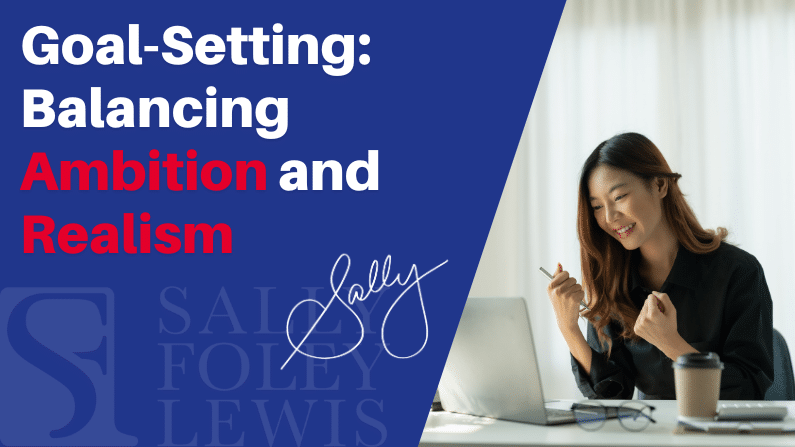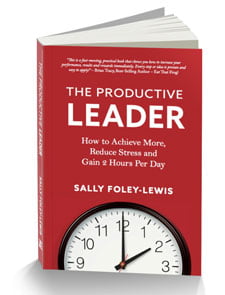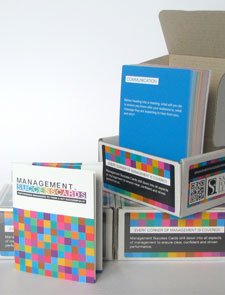Last week, we shared some practical tips to help you overcome challenges and prevent burnout. If you missed that, read here.
Today, let’s shift our focus on the importance of goal-setting and some effective techniques to help you succeed in your role as a Middle Manager.
Setting goals is an art and in middle management, it’s about striking the balance between ambition and realism. Ambition fuels our aspirations, while realism anchors us in practicality. Together, they pave the way for sustainable growth and achievement.
Aspire for the stars, but ground your dreams in reality.
Ambition ignites the fire within, driving you to reach for new heights and envision grand possibilities. It pushes you beyond your comfort zone and challenges you to dream big.
However, ambition alone can lead to disillusionment if not tempered by realism. Realism keeps your ambitions grounded, reminding you of the constraints and challenges that lie ahead. It prompts you to assess your resources, capabilities and timelines realistically.
Striking the right balance between ambition and realism is a fine art. It involves setting ambitious yet attainable goals, ones that stretch your limits while remaining within the realm of possibility. It means acknowledging obstacles and setbacks, but seeing them as opportunities for growth rather than roadblocks.
According to AppCurators, an IT service, “While ambition is a necessary ingredient for success, it is also important to balance it with realistic goal-setting. Without a sense of realism and practicality, an ambitious person may become overly fixated on their aspirations and fail to achieve them, causing frustration, disillusionment, and burnout.”
Here is a proven goal-setting technique, and some extra effective strategies to guide you in establishing objectives that are not only aspirational but also aligned with your long-term success:
1. S.M.O.O.T.H.E.R™ Goal Getting
It’s tempting to overload your team with tasks, especially when there’s a year-end crunch. However, quality should take precedence over quantity. Establish a system that encourages the setting of realistic and achievable goals. This not only prevents burnout but also ensures that each task contributes meaningfully to the team’s success.
-
S – Specific: Like S.M.A.R.T. the more specific you can articulate your goal the more clarity you will have working towards achieving it.
-
M – Measurable: As management guru Peter Drucker says, “What gets measured, gets managed.” How will you know you’ve achieved your goal?
-
O – Operational Plan: Break the goal into your operational plan, what one thing do you need to do first. Make your goal achievable by creating the plan.
-
O – Obstacles: What will get in the way of you achieving your goal. Get ahead of your own game and consider all the physical, emotional, environmental objections and obstacles that might trip you up. (This includes the well meaning, loving friends and family who try to steer you ‘back to safety’.) Identify them and what you will do to counter them should they actually show up.
-
T – Timebound: When will you achieve your goal? Add milestones as you go.
I love and wear the colours red and blue as it significantly reduces time in deciding what to wear each day. I also love buying new clothes! I’m telling you this because I have a milestone goal every year: if I hit a certain level of that goal by the 30th June (the halfway mark) I give myself permission to buy an expensive, quality, tailored outfit! What milestones and rewards can you set for yourself or your team? James Clear, the author of Atomic Habits, calls this habit stacking: You can X when you reach Y. I call it a reward and an incentive for hitting the mark by the due date, i.e. being time bound. Achievement – being proud of oneself, can also be an incentive. Be mindful of what impact incentives can have, they won’t always work. Rather than offer an incentive, ask what incentive one can apply for themselves.
-
H – Help: Who can help you? Even if all you want is an accountability buddy, who can help you stay the course? If you need to learn a new skill or engage an expert to help you get your goal, identify who that will be. Warning: don’t use researching as a form of procrastinating starting your goal-getting!
-
E – Emotional Connection: Do you love it? Okay, love might be a bit over the top, yet the point remains that you will have a much better chance of getting your goal when you can truly connect with the goal, or the outcome you’ll get. Will applying an incentive help or hinder in this connection?
-
R – Review: When will you review your progress? All too often we can shift into the next goal or task before allowing a moment to pause and reflect. Stop and review how you’re progressing. Ask yourself: “What have I learnt from this experience?”
2. Align with Organisational Objectives
Ensure your goals align with the broader organisational strategy. This alignment contributes to both personal and organisational success.
3. Prioritise Based on Impact
Assess the potential impact of each goal. Prioritise those that contribute significantly to team or organisational success.
4. Break Down Larger Goals
Large goals can be overwhelming. Break them down into smaller, manageable tasks. This promotes a sense of achievement as each component is completed.
5. Balance Short-term and Long-term Goals
While focusing on immediate tasks, keep an eye on the bigger picture. Striking a balance between short-term wins and long-term objectives ensures sustained success.
These techniques will help you get your priorities straight and align your objectives with the organisation’s long-term success goals.
And remember…
“The only limit to our realisation of tomorrow will be our doubts of today.”
– Franklin D. Roosevelt
Define your objectives, set your S.M.O.O.T.H.E.R™ goals, keep your eyes on the prize and never give up. If you need a boost in confidence with planning, goal setting and achieving more productivity so you can lead yourself and your team effectively and efficiently, the CONFIDENCE Program™: Middle Managers Mastermind can help you. Learn more about the program here and if you want to book a chat, let me know.
Next week, I’ll share more about success focusing on ‘Continuous Learning: The Ever-Open Door to Luck.’




